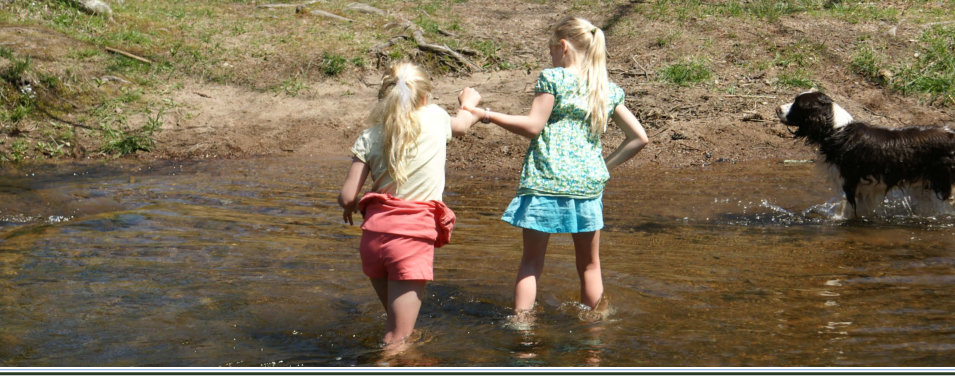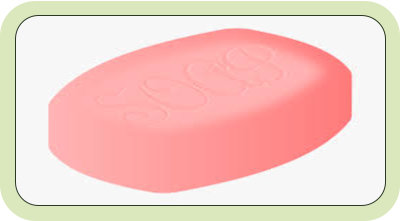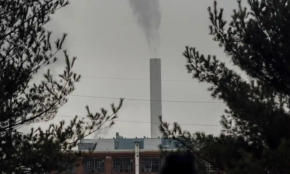

Move Past Plastic, MPP

© Lorem ipsum dolor sit Nulla in mollit pariatur in, est ut dolor eu eiusmod lorem
MPP News
---------------------------------------------EPA Grants Petition
to Order Testing on
Human Health
Hazards of PFAS
Today, as a part of the U.S. Environmental Protection Agency (EPA)’s efforts to address the human health and ecological risks of per- and polyfluoroalkyl substances (PFAS), the Agency announced it was granting a petition from six North Carolina public health and environmental justice organizations to compel companies to conduct testing of certain PFAS. Today’s action advances the Biden-Harris Administration’s commitment to improve understanding of, and to protect people from, the potential risks of PFAS. The petitioners’ request that EPA leverage its authorities to compel development of much needed new information on PFAS underscored the need for robust testing on PFAS, and played a key role in advancing the Agency’s plans for a National PFAS Testing Strategy, a pillar of the agency’s PFAS Strategic Roadmap that will lead to improved health protections for all communities. “Communities in North Carolina and across the country deserve to know the potential risks that exposure to PFAS pose to families and children,” said EPA Administrator Michael S. Regan. “By taking action on this petition, EPA will have a better understanding of the risks from PFAS pollution so we can do more to protect people. This data will also help us identify the sources of pollution so we can hold those accountable for endangering the public. EPA is fully committed to addressing this longstanding pollution challenge, and today we take another critical step forward to protect the water, air, and land we all depend on.” EPA plans to require PFAS manufacturers to provide the agency with toxicity data and information on categories of PFAS. EPA expects to exercise its TSCA section 4 order authority to require recipients of test orders to conduct and fund the studies. The information gathered as a result of this testing will help EPA deepen its understanding of the impacts of PFAS, including potential hazards. As the agency learns more about the impacts of PFAS, EPA will continue to take action to protect human health and the environment. In October 2020, the Center for Environmental Health, Cape Fear River Watch, Clean Cape Fear, Democracy Green, Toxic Free NC, and the NC Black Alliance submitted a petition asking EPA to require health and environmental impact testing on 54 chemical substances that the petition identifies as PFAS manufactured by The Chemours Company in Fayetteville, North Carolina. The previous Administration denied this petition in January 2021, and the petitioners requested that the Agency reconsider its denial in March 2021, which EPA agreed to do in September 2021, in light of the change in administration and in policy priorities concerning PFAS. In October 2021, EPA announced a National PFAS Testing Strategy which identifies priority substances for the first of several described phases of an iterative testing approach based on grouping of chemicals by chemistry features and available toxicity data. These substances include many of the chemicals identified in the petition, but also additional PFAS which will inform a wider universe of categories of PFAS where key data is lacking. For example, the first phase of testing on 24 PFAS is expected to provide data that can be extrapolated to 2,950 PFAS that belong to the same categories as the 24 individual substances.Today, EPA has granted the petition and
will exercise its TSCA authorities to
compel development of information on
PFAS. In summary:
Near-Term Testing Covers 30 of 54 Petition Chemicals – Under the Testing Strategy, EPA’s first test orders for 24 categories of PFAS about which the least is known will provide human health hazard data that cover 30 of the 54 petition chemicals. Subsequent Testing May Cover nine of 54 Petition Chemicals – An additional nine PFAS identified in the petition belong to one other category included in the Testing Strategy. EPA is conducting more in-depth analyses of the sufficiency of the existing data, which will inform later phases of testing. Remaining 15 of 54 Petition Chemicals – 15 chemicals identified in the petition do not fit the definition of PFAS used in developing the Testing Strategy. EPA has determined that there is robust data on some of them available to the Agency. EPA is conducting more in- depth analyses of the existing data, which will inform later phases of testing. Mixtures Studies – EPA will address PFAS mixtures by using the toxicity of the individual substances to predict the toxicity of the mixture, an approach which is consistent with the current state- of-science on PFAS. EPA is proceeding with development and peer review of these methods as specifically applied to PFAS. Human Studies – EPA is contributing to and reviewing numerous existing ongoing human studies, including studies on potentially exposed workers and communities in North Carolina, and is evaluating how to further advance and expand on these efforts. These include studies of health outcomes for people in communities impacted by industrial PFAS releases, as well studies that explore the connection between chronic health outcomes and PFAS exposures in North Carolina. Analytical Standards – EPA does not believe it is appropriate to require the development or submission of analytical standards with the initial test orders that will be issued under the Testing Strategy and lacks the ability to order the submission of all analytical standards in the manner requested. Nonetheless, EPA has requested comment on whether to require the submission of existing analytical methods for PFAS under a separate rulemaking that the Agency expects to finalize next year. EPA will also continue to work to address ongoing PFAS contamination through the actions outlined in the PFAS Strategic Roadmap.Learn More
SOLVING PLASTIC POLLUTION WILL HELP US
STOP CLIMATE CHANGE
MAY 26, 2021 Two of the biggest environmental crises in the world today are climate change and plastic pollution. There is no question that these two issues require real-time innovation and action in order to minimize the effect they will have on generations to come. Plastic pollution and climate change are not separate issues, but rather are closely linked in a variety of ways. According to researchers from the Intergovernmental Panel on Climate Change, plastic production and disposal resulted in 850 million tons of greenhouse gas emissions in 2019 and may be responsible for up to 2.8 billion tons by 2050. With numbers like these, it’s no secret that many solutions to the world’s plastic problem go hand-in-hand with solutions to the climate crisis. Stop burning plastic One avenue to explore is how we manage plastic after it has been discarded by consumers. Most plastic will end up in landfills or in the environment after it is discarded. However, as plastic pollution continues to grow every year, the space to manage these plastics becomes more and more finite. One solution nations have found to this issue is to simply burn the waste. This method not only produces toxic gases and disperses pollutants into our air, but also is responsible for 38 percent of all the carbon emitted from plastic pollution. By advancing our capabilities around other plastic disposal methods instead of incineration, we could cut out one third of carbon emissions from plastic pollution. These advancements need to come in the forms of more accessible waste disposal units, equitable waste pickup systems and investment in recycling. Recycling comes with many limits, however, and should not be hailed as the be-all-end-all solution by any means. Even more important is focusing on the source of the problem: the industries making all that plastic. Shift the responsibility for plastic disposal Another method that could greatly reduce the plastic crisis is to support the creation and support of policies that make plastic producers responsible for the waste associated with their products. Consumers often do not have many choices other than recycling, which has been shown to be ineffective in solving the world’s plastic waste issue. However, large corporations do have the resources to manage waste and therefore should be responsible for shouldering the burden that plastic places on their consumers. A few examples of how producers can do this is through national buyback programs that incentives the collection and proper disposal of plastics and requires producers to use a minimum amount of recycled materials in their packaging. These shifts are especially important in places like the United States which produces more plastic packaging waste per capita than any other country. Sign our petition to support the Break Free From Plastic Pollution Act, which can make progress by requiring plastic producers to assume responsibility for their products. Give consumers a fair choice One final way that we can greatly reduce the impact of plastic is to invest in plastic alternatives and to support plastic policies, such as plastic bans, in all levels of governments. For the average consumer, plastics are almost unavoidable due to a lack of alternatives and overwhelming use of plastic in everyday goods. Alternative packaging options, such as biodegradable food containers, and policies that demand the use of less plastic can help consumers cut their plastic use. Along with making it easier for consumers to reduce their plastic use, there are some ways we can all lessen our plastic footprints now. We can use reusable grocery bags, buy more glass or paper packaging and educate ourselves on the brands we decide to buy from. To help you get started, read our blog about making your bathroom plastic free without breaking the bank! These steps may seem small but if everyone took the time to practice them, we as consumers could have a great impact on plastic pollution as well. Use your voice, challenge yourself to go plastic free and encourage those around you to act as well. Take the pledge to act on plastic pollution and use EARTHDAY.ORG’S Plastic Footprint Calculator to see the impact your plastic use is having. With collective action we can create a future free of plastics and give generations to come a more stable and healthy environment. Tags: climate change end plastic pollution great global clean up plastic policy recycling Jake Rubenstein https://www.earthday.org/solving-plastic-pollution-will-help-us-stop- climate-change/Latest NEWS
Microplastics
The micro-, submicron-, and nanoplastic hunt: A review of detection methods for plastic particles. Critical review of microplastics removal from the environment. Remediation of microplastics using bionanomaterials: A review. Plastic accumulation during COVID-19: call for another pandemic; bioplastic a step towards this challenge? Microplastics waste in environment: A perspective on recycling issues from PPE kits and face masks during the COVID-19 pandemic. From properties to toxicity: Comparing microplastics to other airborne microparticles. Occurrence, toxicity and remediation of polyethylene terephthalate plastics. A review.Fact Sheet: How Much Disposable Plastic
We Use
The billions upon billions of items of plastic waste choking our oceans, lakes, and rivers and piling up on land are more than unsightly and harmful to plants and wildlife. The following 10 facts shed light on how plastic is proving dangerous to our planet, health, and wildlife. To learn more about the threat and impact of plastic pollution and get tips to reduce your plastic consumption, download our Plastic Pollution Primer and Toolkit and use our Plastic Pollution Calculator today! FACTS #1 More than 480 billion plastic bottles were sold worldwide in 2016. That is up from about 300 billion only a decade ago. #2 About one trillion single-use plastic bags are used annually across the globe. That’s nearly 2 million every minute. #3 More than half a billion plastic straws are used every day around the world. #4 Over half of the world’s plastic thrown out in 2015 was plastic packaging. That’s over 141 million metric tons. #5 Takeout orders account for around 269,000 US tons of plastic waste that has entered the oceans. #6 The amount of bubble wrap that is produced annually is enough to wrap around the Equator ten times. #7 The world uses 500 billion plastic cups every year. #8 16 billion disposable coffee cups are used each year. These are coated with plastic to laminate the inside and use plastic lids. #9 The world produces more than 14 million US tons of polystyrene (plastic foam) each year. Americans alone throw away around 25 billion Styrofoam cups every year. #10 Around the world, people litter more than 4.5 trillion cigarette butts every year.END PLASTIC POLLUTION
HOW TO MAKE YOUR SHOWER PLASTIC FREE
WITHOUT BREAKING THE BANK
Begin a journey toward a plastic-free lifestyle — one that I have attempted before but never followed through with. I was already an avid user of reusable cups and straws, but I wanted to venture out of my comfort zone and work on revamping my daily routines. After realizing how much plastic was filling my bathroom sink, cabinets and shower, I knew exactly where to start my journey. I recognized that while I may not have the ability to influence hundreds of people to commit to plastic-free living, I can control my own actions and lower my own plastic consumption. My shower was the first hurdle I vowed to tackle along this journey, and it began with a lot of research to find plastic-free replacements for my most commonly used items. I understood that while I was using large liter bottles of product, which requires less plastic than smaller volume bottles, I wanted to aim higher. I wanted products that were zero plastic in their use, their packaging and most importantly their disposal. Shower products with plastic Shower products with less plastic Shower before and after transformation I began researching reputable companies that make shampoo and conditioner bars that have been well-reviewed for dyed hair. My search showed me that many bottled shampoo and conditioner products are up to 80 to 95% water. For me, the change from plastic bottles to bars was easy once I understood that I was originally paying more for a watered- down product. From there, I moved onto plastic-free soap, razors, shower scrubs and facial products. Many of these products already have plastic-free alternatives, but I was so used to my daily products and purchasing routines that I never thought to move out of my comfort zone. At the same time, as a college student with limited income, I didn’t have a lot of money to spend on this lifestyle revamp. Because of this, my purchases had to be intentional and cost effective over time. Avoiding the “pink tax” on razors and razor blades happened to be a major success of this overhaul. While the “pink tax” isn’t an actual tax, the price comparisons that women pay for razors, shaving cream and other shower products compared to men are staggering. Women on average spend 11% more on razors compared to their male counterparts. In comparison, I am now using a bamboo safety razor that costs only $25 and will last a lifetime, in addition to plastic-free recyclable razor blades. Five razor blades from common shaving companies cost around $20 for women, while safety razor blades cost me $3. While I haven’t found a replacement for every plastic item in my shower, my shower shelf already has more space and less plastic! Overall, I’m now spending about $465 per year on my shower products versus the $1400 per year I spent when they were plastics based. If we all did this, the benefits to the planet would be incalculable. It’s important to make meaningful changes that add up over time rather than none at all if we want to combat plastic pollution on a large scale. For more tips and tricks to start your zero waste journey, sign up for EARTHDAY.ORG’s End Plastic Pollution campaign. This blog is the first of a three-part series on how to make your routines plastic free from the lens of one of our interns, Miranda Custer. Keep an eye out for part two around World Oceans day on June 6th, 2021, focused on daily hygiene and sink-based routines. https://www.earthday.org/how-to-make-your-shower-plastic-free-without- breaking-the-bank/The Big Problem With Plastic
CR reveals where most of the plastic you throw away really ends up and explains what to do to limit its environmental harm

MPP is a Member
fot the
Anthropocene
Alliance
Anthropocene Alliance (A2) has almost 300 member-communities in 41 U.S. states and territories. They are impacted by flooding, toxic waste, wildfires, and drought and heat — all compounded by reckless development and climate change. The consequence is broken lives and a ravaged environment. The goal of A2 is to help communities fight back. We do that by providing them organizing support, scientific and technical guidance, and better access to foundation and government funding. Most of all, our work consists of listening to our frontline leaders. Their experience, research, and solidarity guide everything we do, and offer a path toward environmental and social justice. Supported by outstanding partner organizations with expertise in engineering, hydrology, public health, planning, and the law, A2 leaders have successfully halted developments in climate-vulnerable areas; implemented nature-based hazard mitigation strategies; organized home buyouts; and pushed for clean-ups at superfund sites, toxic landfills, and petrochemical plants. We support everyone we can, but our special priority is people who have suffered the worst environmental impacts for the longest time; that usually means low- income, Black, Latinx, Native American and other underserved communities. To learn about our policies, read our A 10-Point Platform on Climate Change.
Is this a false
solution.
The American Chemistry council is known for 70+ years of creating “recycling program” that have proven eneffective and places the burden onto consumers and not promoting concumer responsiblity. Is this just another reflection of the past ¾ of a decade of misplaced guilt? Does this program solve the amount of total single use plastic disposed of in Portland, OR?
A Measure of
Strength:
Developmental
PFAS Exposures and
Bone Mineral
Content in
Adolescence
is accompanied by Charles W. Schmidt Published:17 December 2021CID: 124002https://doi.org/10.128 9/EHP10551Lending a helping hand.

The Covanta incinerator in Chester,
Pennsylvania. Residents live right behind
the plant, which burned about 200 tons of
garbage a day until the practice was
discontinued in April. Photograph:
Hannah Yoon/The Guardian



Sponsored by TLC Foundation




Move Past Plastic, MPP

Sponsored by TLC Foundation

© Lorem ipsum dolor sit Nulla in mollit pariatur in, est ut dolor eu
eiusmod lorem
MPP
News
------------------------------- --------------EPA Grants
Petition to Order
Testing on
Human Health
Hazards of PFAS
Today, as a part of the U.S. Environmental Protection Agency (EPA)’s efforts to address the human health and ecological risks of per- and polyfluoroalkyl substances (PFAS), the Agency announced it was granting a petition from six North Carolina public health and environmental justice organizations to compel companies to conduct testing of certain PFAS. Today’s action advances the Biden-Harris Administration’s commitment to improve understanding of, and to protect people from, the potential risks of PFAS. The petitioners’ request that EPA leverage its authorities to compel development of much needed new information on PFAS underscored the need for robust testing on PFAS, and played a key role in advancing the Agency’s plans for a National PFAS Testing Strategy, a pillar of the agency’s PFAS Strategic Roadmap that will lead to improved health protections for all communities. “Communities in North Carolina and across the country deserve to know the potential risks that exposure to PFAS pose to families and children,” said EPA Administrator Michael S. Regan. “By taking action on this petition, EPA will have a better understanding of the risks from PFAS pollution so we can do more to protect people. This data will also help us identify the sources of pollution so we can hold those accountable for endangering the public. EPA is fully committed to addressing this longstanding pollution challenge, and today we take another critical step forward to protect the water, air, and land we all depend on.” EPA plans to require PFAS manufacturers to provide the agency with toxicity data and information on categories of PFAS. EPA expects to exercise its TSCA section 4 order authority to require recipients of test orders to conduct and fund the studies. The information gathered as a result of this testing will help EPA deepen its understanding of the impacts of PFAS, including potential hazards. As the agency learns more about the impacts of PFAS, EPA will continue to take action to protect human health and the environment. In October 2020, the Center for Environmental Health, Cape Fear River Watch, Clean Cape Fear, Democracy Green, Toxic Free NC, and the NC Black Alliance submitted a petition asking EPA to require health and environmental impact testing on 54 chemical substances that the petition identifies as PFAS manufactured by The Chemours Company in Fayetteville, North Carolina. The previous Administration denied this petition in January 2021, and the petitioners requested that the Agency reconsider its denial in March 2021, which EPA agreed to do in September 2021, in light of the change in administration and in policy priorities concerning PFAS. In October 2021, EPA announced a National PFAS Testing Strategy which identifies priority substances for the first of several described phases of an iterative testing approach based on grouping of chemicals by chemistry features and available toxicity data. These substances include many of the chemicals identified in the petition, but also additional PFAS which will inform a wider universe of categories of PFAS where key data is lacking. For example, the first phase of testing on 24 PFAS is expected to provide data that can be extrapolated to 2,950 PFAS that belong to the same categories as the 24 individual substances.Today, EPA has granted the petition
and will exercise its TSCA authorities
to compel development of
information on PFAS. In summary:
Near-Term Testing Covers 30 of 54 Petition Chemicals – Under the Testing Strategy, EPA’s first test orders for 24 categories of PFAS about which the least is known will provide human health hazard data that cover 30 of the 54 petition chemicals. Subsequent Testing May Cover nine of 54 Petition Chemicals – An additional nine PFAS identified in the petition belong to one other category included in the Testing Strategy. EPA is conducting more in- depth analyses of the sufficiency of the existing data, which will inform later phases of testing. Remaining 15 of 54 Petition Chemicals – 15 chemicals identified in the petition do not fit the definition of PFAS used in developing the Testing Strategy. EPA has determined that there is robust data on some of them available to the Agency. EPA is conducting more in- depth analyses of the existing data, which will inform later phases of testing. Mixtures Studies – EPA will address PFAS mixtures by using the toxicity of the individual substances to predict the toxicity of the mixture, an approach which is consistent with the current state-of- science on PFAS. EPA is proceeding with development and peer review of these methods as specifically applied to PFAS. Human Studies – EPA is contributing to and reviewing numerous existing ongoing human studies, including studies on potentially exposed workers and communities in North Carolina, and is evaluating how to further advance and expand on these efforts. These include studies of health outcomes for people in communities impacted by industrial PFAS releases, as well studies that explore the connection between chronic health outcomes and PFAS exposures in North Carolina. Analytical Standards – EPA does not believe it is appropriate to require the development or submission of analytical standards with the initial test orders that will be issued under the Testing Strategy and lacks the ability to order the submission of all analytical standards in the manner requested. Nonetheless, EPA has requested comment on whether to require the submission of existing analytical methods for PFAS under a separate rulemaking that the Agency expects to finalize next year. EPA will also continue to work to address ongoing PFAS contamination through the actions outlined in the PFAS Strategic Roadmap.Learn More
SOLVING PLASTIC POLLUTION WILL HELP
US STOP CLIMATE CHANGE
MAY 26, 2021 Two of the biggest environmental crises in the world today are climate change and plastic pollution. There is no question that these two issues require real-time innovation and action in order to minimize the effect they will have on generations to come. Plastic pollution and climate change are not separate issues, but rather are closely linked in a variety of ways. According to researchers from the Intergovernmental Panel on Climate Change, plastic production and disposal resulted in 850 million tons of greenhouse gas emissions in 2019 and may be responsible for up to 2.8 billion tons by 2050. With numbers like these, it’s no secret that many solutions to the world’s plastic problem go hand-in- hand with solutions to the climate crisis. Stop burning plastic One avenue to explore is how we manage plastic after it has been discarded by consumers. Most plastic will end up in landfills or in the environment after it is discarded. However, as plastic pollution continues to grow every year, the space to manage these plastics becomes more and more finite. One solution nations have found to this issue is to simply burn the waste. This method not only produces toxic gases and disperses pollutants into our air, but also is responsible for 38 percent of all the carbon emitted from plastic pollution. By advancing our capabilities around other plastic disposal methods instead of incineration, we could cut out one third of carbon emissions from plastic pollution. These advancements need to come in the forms of more accessible waste disposal units, equitable waste pickup systems and investment in recycling. Recycling comes with many limits, however, and should not be hailed as the be-all-end-all solution by any means. Even more important is focusing on the source of the problem: the industries making all that plastic. Shift the responsibility for plastic disposal Another method that could greatly reduce the plastic crisis is to support the creation and support of policies that make plastic producers responsible for the waste associated with their products. Consumers often do not have many choices other than recycling, which has been shown to be ineffective in solving the world’s plastic waste issue. However, large corporations do have the resources to manage waste and therefore should be responsible for shouldering the burden that plastic places on their consumers. A few examples of how producers can do this is through national buyback programs that incentives the collection and proper disposal of plastics and requires producers to use a minimum amount of recycled materials in their packaging. These shifts are especially important in places like the United States which produces more plastic packaging waste per capita than any other country. Sign our petition to support the Break Free From Plastic Pollution Act, which can make progress by requiring plastic producers to assume responsibility for their products. Give consumers a fair choice One final way that we can greatly reduce the impact of plastic is to invest in plastic alternatives and to support plastic policies, such as plastic bans, in all levels of governments. For the average consumer, plastics are almost unavoidable due to a lack of alternatives and overwhelming use of plastic in everyday goods. Alternative packaging options, such as biodegradable food containers, and policies that demand the use of less plastic can help consumers cut their plastic use. Along with making it easier for consumers to reduce their plastic use, there are some ways we can all lessen our plastic footprints now. We can use reusable grocery bags, buy more glass or paper packaging and educate ourselves on the brands we decide to buy from. To help you get started, read our blog about making your bathroom plastic free without breaking the bank! These steps may seem small but if everyone took the time to practice them, we as consumers could have a great impact on plastic pollution as well. Use your voice, challenge yourself to go plastic free and encourage those around you to act as well. Take the pledge to act on plastic pollution and use EARTHDAY.ORG’S Plastic Footprint Calculator to see the impact your plastic use is having. With collective action we can create a future free of plastics and give generations to come a more stable and healthy environment. Tags: climate change end plastic pollution great global clean up plastic policy recycling Jake Rubenstein https://www.earthday.org/solving-plastic-pollution- will-help-us-stop-climate-change/Latest NEWS
Microplastics
The micro-, submicron-, and nanoplastic hunt: A review of detection methods for plastic particles. Critical review of microplastics removal from the environment. Remediation of microplastics using bionanomaterials: A review. Plastic accumulation during COVID-19: call for another pandemic; bioplastic a step towards this challenge? Microplastics waste in environment: A perspective on recycling issues from PPE kits and face masks during the COVID-19 pandemic. From properties to toxicity: Comparing microplastics to other airborne microparticles. Occurrence, toxicity and remediation of polyethylene terephthalate plastics. A review.Fact Sheet: How Much Disposable
Plastic We Use
The billions upon billions of items of plastic waste choking our oceans, lakes, and rivers and piling up on land are more than unsightly and harmful to plants and wildlife. The following 10 facts shed light on how plastic is proving dangerous to our planet, health, and wildlife. To learn more about the threat and impact of plastic pollution and get tips to reduce your plastic consumption, download our Plastic Pollution Primer and Toolkit and use our Plastic Pollution Calculator today! FACTS #1 More than 480 billion plastic bottles were sold worldwide in 2016. That is up from about 300 billion only a decade ago. #2 About one trillion single-use plastic bags are used annually across the globe. That’s nearly 2 million every minute. #3 More than half a billion plastic straws are used every day around the world. #4 Over half of the world’s plastic thrown out in 2015 was plastic packaging. That’s over 141 million metric tons. #5 Takeout orders account for around 269,000 US tons of plastic waste that has entered the oceans. #6 The amount of bubble wrap that is produced annually is enough to wrap around the Equator ten times. #7 The world uses 500 billion plastic cups every year. #8 16 billion disposable coffee cups are used each year. These are coated with plastic to laminate the inside and use plastic lids. #9 The world produces more than 14 million US tons of polystyrene (plastic foam) each year. Americans alone throw away around 25 billion Styrofoam cups every year. #10 Around the world, people litter more than 4.5 trillion cigarette butts every year.END PLASTIC POLLUTION
HOW TO MAKE YOUR SHOWER PLASTIC
FREE WITHOUT BREAKING THE BANK
Begin a journey toward a plastic-free lifestyle — one that I have attempted before but never followed through with. I was already an avid user of reusable cups and straws, but I wanted to venture out of my comfort zone and work on revamping my daily routines. After realizing how much plastic was filling my bathroom sink, cabinets and shower, I knew exactly where to start my journey. I recognized that while I may not have the ability to influence hundreds of people to commit to plastic-free living, I can control my own actions and lower my own plastic consumption. My shower was the first hurdle I vowed to tackle along this journey, and it began with a lot of research to find plastic-free replacements for my most commonly used items. I understood that while I was using large liter bottles of product, which requires less plastic than smaller volume bottles, I wanted to aim higher. I wanted products that were zero plastic in their use, their packaging and most importantly their disposal. Shower products with plastic Shower products with less plastic Shower before and after transformation I began researching reputable companies that make shampoo and conditioner bars that have been well-reviewed for dyed hair. My search showed me that many bottled shampoo and conditioner products are up to 80 to 95% water. For me, the change from plastic bottles to bars was easy once I understood that I was originally paying more for a watered-down product. From there, I moved onto plastic-free soap, razors, shower scrubs and facial products. Many of these products already have plastic-free alternatives, but I was so used to my daily products and purchasing routines that I never thought to move out of my comfort zone. At the same time, as a college student with limited income, I didn’t have a lot of money to spend on this lifestyle revamp. Because of this, my purchases had to be intentional and cost effective over time. Avoiding the “pink tax” on razors and razor blades happened to be a major success of this overhaul. While the “pink tax” isn’t an actual tax, the price comparisons that women pay for razors, shaving cream and other shower products compared to men are staggering. Women on average spend 11% more on razors compared to their male counterparts. In comparison, I am now using a bamboo safety razor that costs only $25 and will last a lifetime, in addition to plastic-free recyclable razor blades. Five razor blades from common shaving companies cost around $20 for women, while safety razor blades cost me $3. While I haven’t found a replacement for every plastic item in my shower, my shower shelf already has more space and less plastic! Overall, I’m now spending about $465 per year on my shower products versus the $1400 per year I spent when they were plastics based. If we all did this, the benefits to the planet would be incalculable. It’s important to make meaningful changes that add up over time rather than none at all if we want to combat plastic pollution on a large scale. For more tips and tricks to start your zero waste journey, sign up for EARTHDAY.ORG’s End Plastic Pollution campaign. This blog is the first of a three-part series on how to make your routines plastic free from the lens of one of our interns, Miranda Custer. Keep an eye out for part two around World Oceans day on June 6th, 2021, focused on daily hygiene and sink-based routines. https://www.earthday.org/how-to-make-your- shower-plastic-free-without-breaking-the-bank/The Big Problem With Plastic
CR reveals where most of the plastic you throw away really ends up and explains what to do to limit its environmental harm

MPP is a Member
fot the
Anthropocene
Alliance
Anthropocene Alliance (A2) has almost 300 member-communities in 41 U.S. states and territories. They are impacted by flooding, toxic waste, wildfires, and drought and heat — all compounded by reckless development and climate change. The consequence is broken lives and a ravaged environment. The goal of A2 is to help communities fight back. We do that by providing them organizing support, scientific and technical guidance, and better access to foundation and government funding. Most of all, our work consists of listening to our frontline leaders. Their experience, research, and solidarity guide everything we do, and offer a path toward environmental and social justice. Supported by outstanding partner organizations with expertise in engineering, hydrology, public health, planning, and the law, A2 leaders have successfully halted developments in climate-vulnerable areas; implemented nature-based hazard mitigation strategies; organized home buyouts; and pushed for clean-ups at superfund sites, toxic landfills, and petrochemical plants. We support everyone we can, but our special priority is people who have suffered the worst environmental impacts for the longest time; that usually means low- income, Black, Latinx, Native American and other underserved communities. To learn about our policies, read our A 10-Point Platform on Climate Change.




























